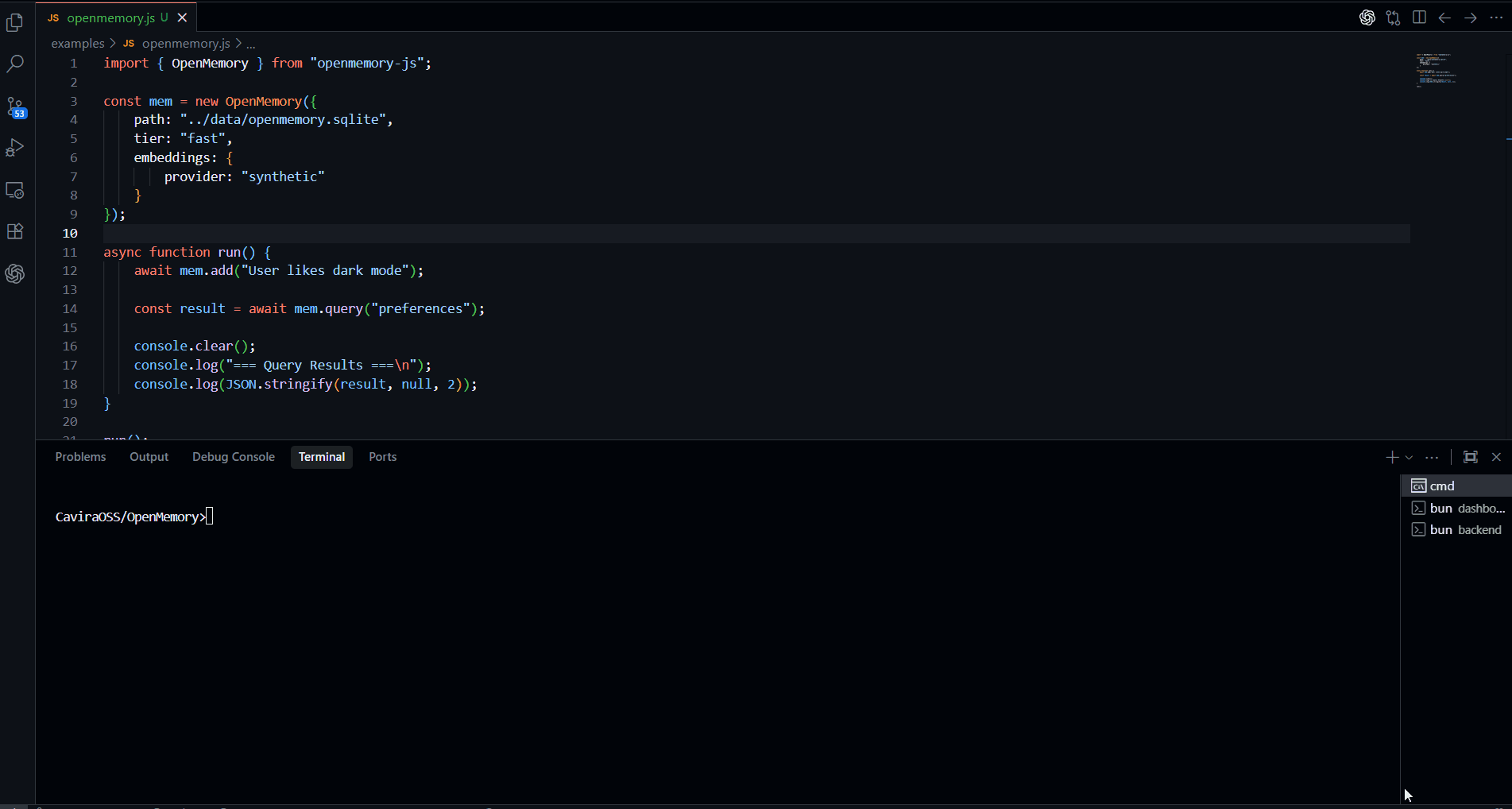Introduction to OpenMemory
OpenMemory is a local-first, cognitive memory engine for AI agents. It features temporal knowledge graphs, multi-sector embeddings, and adaptive decay.
Introduction to OpenMemory

OpenMemory is a production-ready long-term memory system designed specifically for AI agents and conversational systems. It implements the HMD v2 (Holistic Memory Descriptor v2) specification with advanced features like multi-sector embeddings, time-based decay, and graph-based waypoints.
Why OpenMemory?
Most "memory" solutions are just vector databases wrapped in a Python script. OpenMemory is different. It is a Cognitive Engine.
The Problem: Stateless AI
Modern AI assistants have amnesia. They forget everything the moment the session ends.
- No Continuity: Every chat starts from zero.
- No Learning: They repeat the same mistakes.
- High Cost: Re-sending context tokens is expensive.
The Solution: A Living Brain
OpenMemory gives your agent a persistent, evolving brain that lives on your local machine.
- Local-First: Runs inside your app (Node.js/Python). No external API calls required.
- Temporal: Understands time. Knows that "current CEO" changes over time.
- Multi-Sector: Stores memories in 5 distinct sectors (Episodic, Semantic, Procedural, Emotional, Reflective).
- Adaptive Decay: Important memories stick; trivial ones fade.
Key Features
- ⚡ Standalone Mode:
npm install openmemory-js. No Docker. No Server. - 🕸️ Temporal Knowledge Graph: Tracks facts like
(User, location, New York, 2023-2024). - 🧠 5-Sector Embeddings: Context-aware retrieval based on why you are asking.
- 🔌 MCP Support: Plug-and-play with Claude Desktop and Cursor.
How it Works
graph TD
A[User Query] --> B{Cognitive Router}
B -->|Factual| C[Semantic Sector]
B -->|Events| D[Episodic Sector]
B -->|Feelings| E[Emotional Sector]
C & D & E --> F[Ranking Engine]
F -->|Decay + Salience| G[Final Context]
G --> H[LLM Response]
Get Started
Ready to give your agent a brain?
- Quick Start: Up and running in 5 minutes.
- Standalone Mode: Learn about the local-first architecture.
- Examples: Copy-paste code snippets.